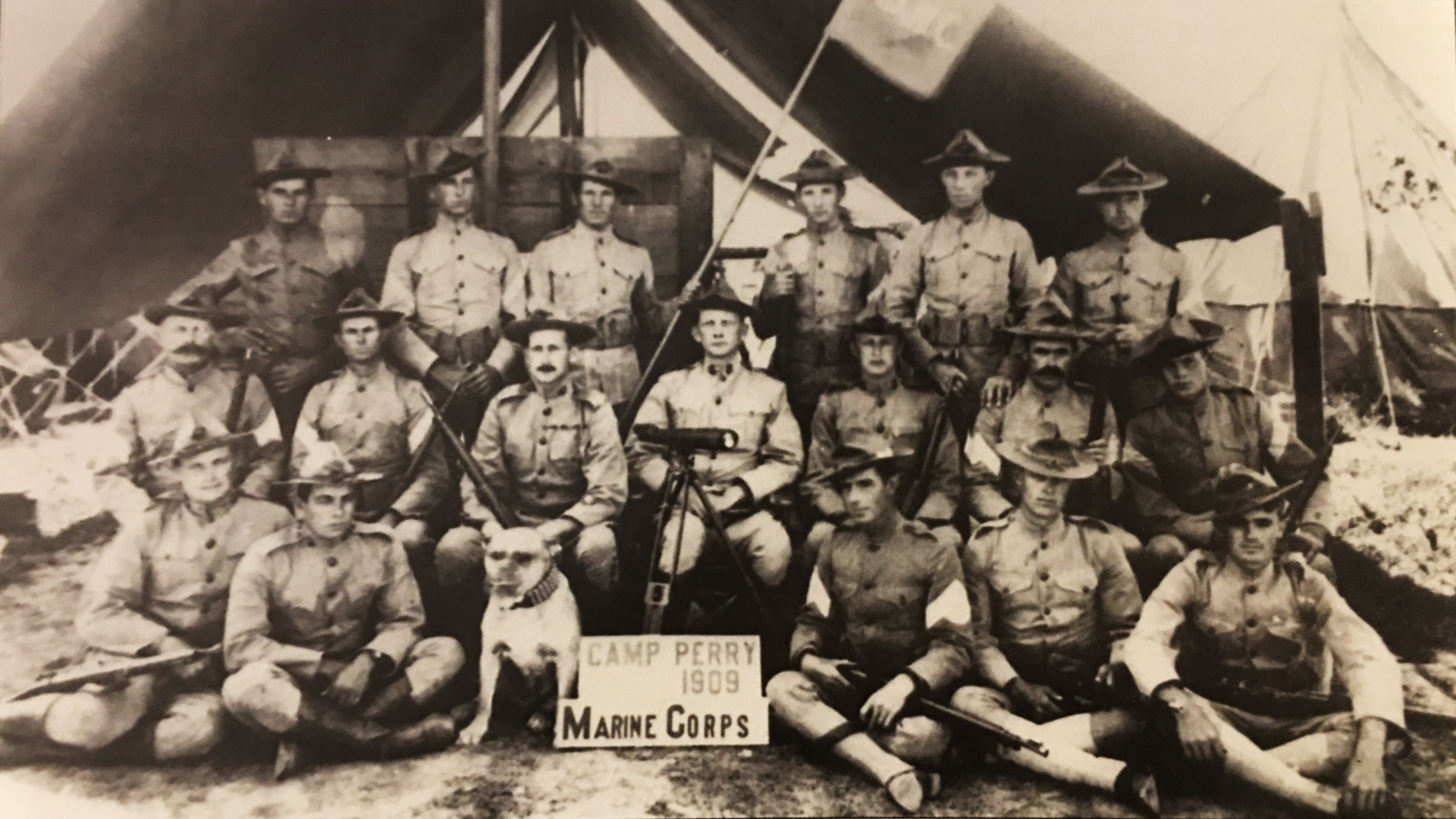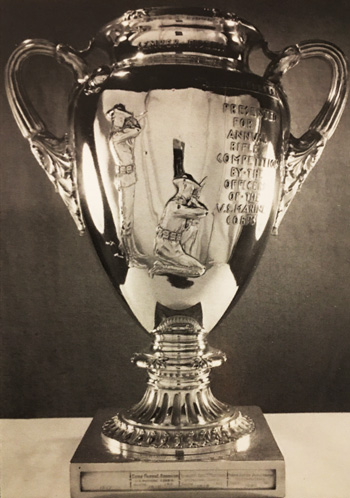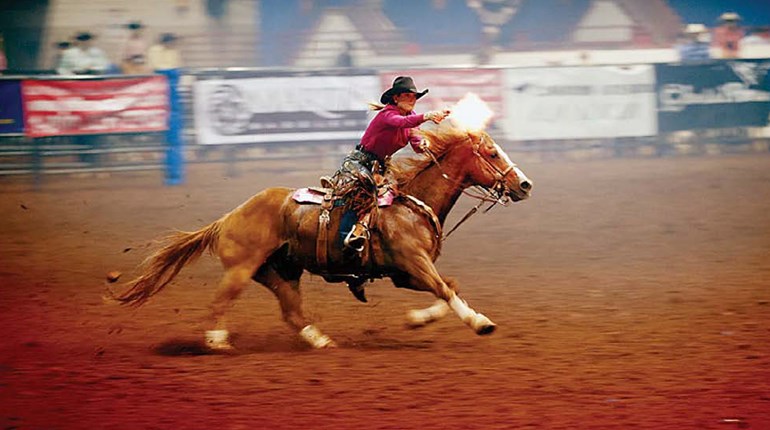
"This year is producing not only higher scores and more of them than ever before but it is bringing forward many new shots."
—Arms and the Man, August, 1909
Change played a prominent role in the 1909 National Matches and, for the most part, was accepted for the betterment of the program with one major exception—the NRA Matches were held after the Board Matches due to scheduling conflicts at Camp Perry. Since the Ohio State Rifle Association matches garnered the premier dates which led up to the government contests, turnouts for the NRA events suffered when many teams left after the Board Matches.

If anything positive did come from this situation, perhaps it was the opportunity to underscore the NRA's pivotal role in marksmanship development and its evolving alliance with the National Board Matches. This year marked the first time that the government provided operating personnel for the NRA portion of the matches which meant there was one executive officer for the entire program and the appropriation allotment was $9,000, up from the prior year's $5,000 amount. And during the NRA's Annual Meeting, a resolution was adopted that called for the federal government to pay all National Match expenses for 1910 and beyond.
The National Board, in its "1909 Report of Rifle Shooting in the U.S.," emphasized the inclusive and coexistent nature it had developed with the NRA:
This is the first time that these matches have been entirely conducted by the War Department … The National Rifle Association certainly deserves every reasonable and practical assistance and recognition from the War Department, for it is a valuable factor in stimulating interest and promoting improvement in shooting throughout the country. The National Match, which is very properly confined to shooting with the service rifle and ammunition, with restrictions upon competitors, needs to be rounded out by the closest association with the matches of the National Rifle Association, which are open to all classes of competitors and to every kind of arm and ammunition.
It was very unfortunate that this year these matches were shot immediately after the National Matches. This arrangement resulted in having a small attendance, comparatively few entries and light receipts.
It is recommended that the War Department adopt the matches of the National Rifle Association as an adjunct to the National Match, and that arrangements be made to shoot these matches immediately before the National Match, under the conduct of the Executive Officer of that match...
It is further recommended that the bulletin of the matches of the National Rifle Association be published in the same order that publishes the bulletin of the National Match.
From time to time the suggestion is made to divide the National Match into several lesser matches … The match as it now stands is really a national event of great importance and of far-reaching capabilities in cementing together into one homogeneous mosaic the widely scattered elements that go to make up the American people. To divide it up into little geographic sectional matches would have the effect of completely destroying its most characteristically national feature.
The National Match is in fact an annual conference of the most purely representative Americans to be found in our country...
It is possible that had we possessed a National Match from 1850 to 1860 the great Civil War might have been averted.

Specific to this year's program, interest in the National Team Match led to a major modification in its conduct. So as not to discourage anyone from competing, the event was restructured so that the field of teams was divided into three classes based on 1908 match results. According to the rules listed in General Orders, No. 69, of the War Department, the top 15 teams from 1908 made up Class A, the second 15 represented Class B, and the rest, including new entries, comprised Class C.
Under the new format, the National Trophy remained the top prize and teams from all classes were eligible to win it while only teams from Classes B and C were eligible for the Hilton Trophy and Class C teams alone vied for the Soldier of Marathon Trophy. In addition, first-, second- and third-place awards were presented in each class. Of the 48 teams entered, Navy claimed its second National Trophy in three years, while New York and Texas won the Hilton and Soldier of Marathon honors, respectively.
Change was also evident when the reversal of a controversial ruling on eligibility was reported in April by the Army and Navy Journal:
It will be welcome news to those interested in the National Rifle Matches that Congress has seen fit to again throw them open to officers of the National Guard of all ranks. In 1908 a clause was included in the Army Appropriations bill restricting the matches to officers and enlisted men of the Army, Navy, Marine Corps and National Guard below the rank of major … the rules were revised to permit the teams for the National Match to include officers of all ranks and to admit to the National Individual Rifle Match and to the National Pistol Match, all such officers and enlisted men, and in addition, members of the National Rifle Association and its affiliated clubs. The change will be heartily approved by those interested in military rifle shooting.

Brig. Gen. Robert K. Evans, then a Lt. Col., served in the capacity of Executive Officer for the matches which concluded with the inaugural firing of the Evans Skirmish Match, named in his honor. The match was highly regarded, as corroborated in the NRA's Annual Report: "It was the unanimous opinion of those who watched the running of the teams that this style of contest furnished the spectacular element for rifle shooters long needed to make it popular with spectators." And perhaps as a testament to the popularity of this type of match, another version of combat-style shooting devised by K.K.V. Casey and entitled the Casey Firing Problem was explained over the course of eight pages in this year's match program—although there is no record or mention of it ever being fired.

What took place prior to this entertaining finish was an array of record scores due in part to a stretch of cooperative weather. The editorial comment that "possibles have come to be as much a matter of course as mess calls," held true as the first perfect score was fired in the National Team Match at 1,000 yards. Ord. Sgt. W.B. Leushner of New York accomplished the feat. The National Individual Match was won by Midshipman Herbert Roesch, whose slow-fire score of 195 established a record. The Infantry's Lt. W.C. Short took the National Pistol title, while Lt. J.L. Topham won the Leech Cup. Midshipman Andrew Denny became the first Navy representative to win the President's Match. Maj. W.B. Martin of New Jersey earned the title of Military Champion of the United States for his high aggregate in the National Individual and President's Matches, and Marine Sgt. Victor Czegka became the first Marine to capture an NRA Match title with his Wimbledon Cup victory. Czegka's Krag was the first service rifle to win the match, and it was one of the first to be topped with a telescopic sight, which drew favorable comment in Arms and the Man, "[that] consistent use will show it to be a great advantage at any range form the shortest to the longest, if it is correctly made, properly attached to the rifle and intelligently and skilfully (sic) used."
"The National Matches should never be closed to the service teams … Although the service teams have won the National Team Match for the past five years, improvements in team training and increasing range facilities have caused great improvement in the marksmanship of many state teams … The states must not be discouraged because they cannot all be at the top at once. It must be remembered that but 15 teams shot in the National Matches of 1903 … and that the majority of state teams have been created since that time."
—1st Lt. George Shaw, Army

Photo: The 1909 United States Marine Corps Rifle Contingent at Camp Perry, Ohio.
Read more: How Gen. Ammon Critchfield Discovered Camp Perry In 1905

































